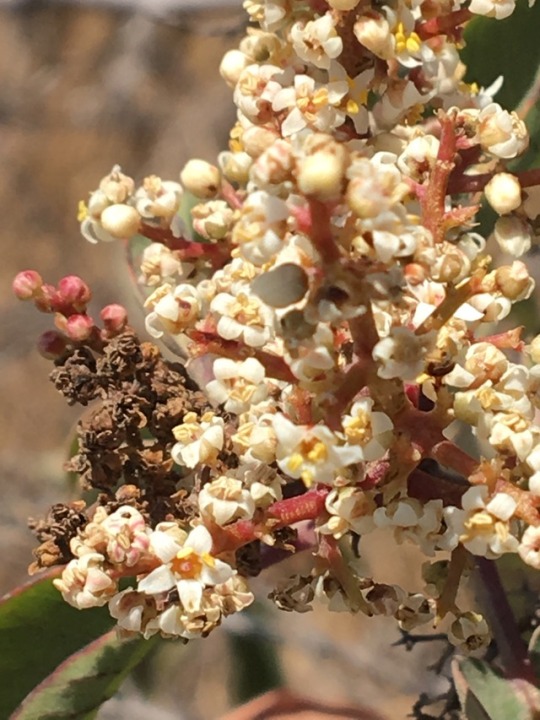#malosma laurina
Text
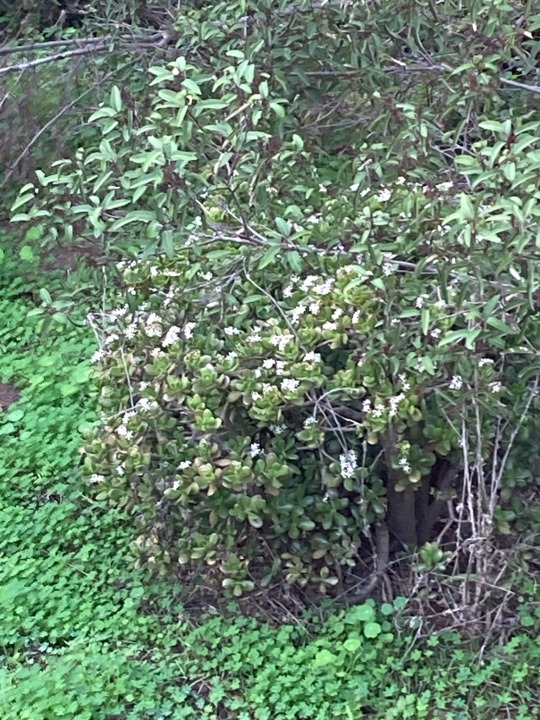
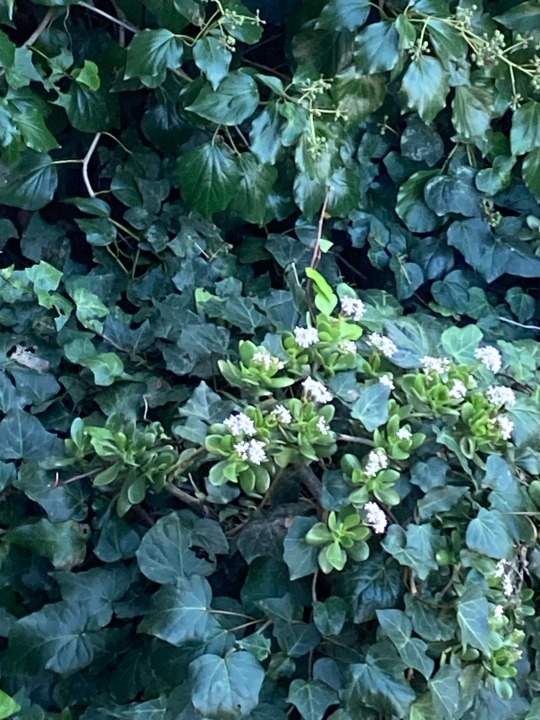
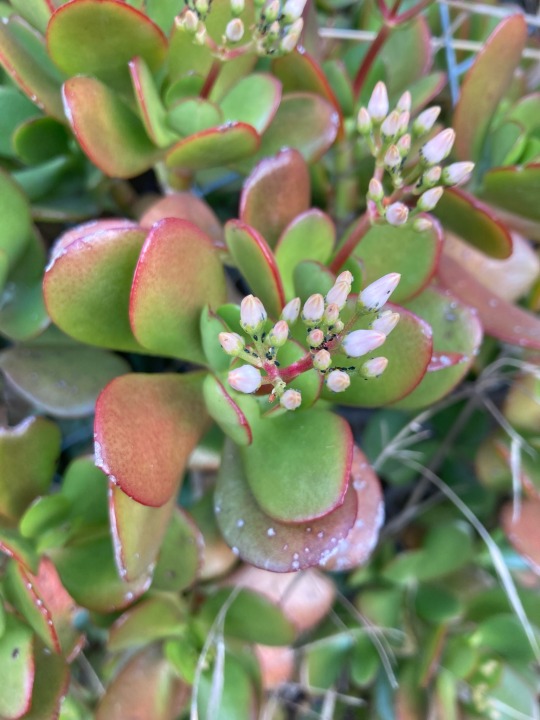

#jade plant#crassula ovata#flowering succulents#ivy#hedera helix#laurel sumac#malosma laurina#nasturtiums#canyon#san diego
1 note
·
View note
Text
DAY 3 @ MILLARD - Malosma laurina
Date: 10/10/19
Time: 10:07 AM
Location: Brown Mountain Truck Trail @ Millard Canyon, past campsite
Route: @ Millard Campside, cross the stream and turn left, following the trail up past the oak forest. You’ll reach a fork in the road - go right. Follow the trail about 20 - 30 yards up the trail
Weather: about 65 F; sunny with clouds clearing
Habitat: sage scrub community with 2 coast live oaks (not very tall) and lots of laurel sumac.
MALOSMA LAURINA - Laurel sumac
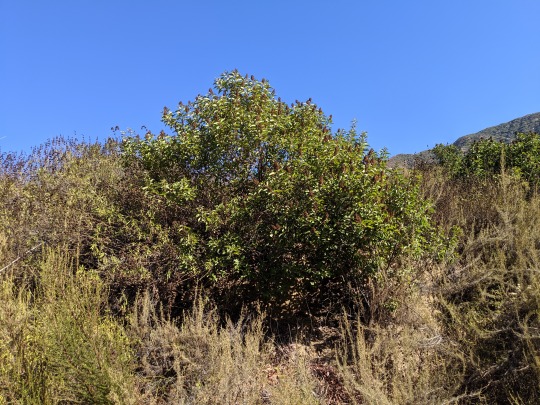
Holy cow - these was so much Malosma in this area. Some of it was dried up, but most was still trying. Most of the berries were dried up leaving most of the with dead branches bearing no fruit. Still, the leaves were in pretty good condition. In areas where there was a lot of sun, the leaves curled in towards the branch on top of in their normal taco state. And the veins were more bulgy.
I found this plant normally on a slope towards the top of the community - is it because they provide shade to other plants?
Along with the coast live oak malosma was the most visited by animals, a lot of birds malosma were feeding from this plant. When scared they would dive toward the trash. It’s a great hiding spot for sure.
In this area, malosma is a pretty dominant plant - there were some bunches that were 10-20ft wide and 5ft deep
0 notes
Photo

Cuscuta subinclusa (canyon dodder) parasitizing Malosma laurina (laurel sumac). Dodder is a holoparasite (obligate parasite) which attaches itself to a host plant and eventually derives its whole livelihood from it. It is an achlorophyllous plant which means it cannot perform its own photosynthesis. In this case, the supporting branches died before the flowers were able to set seed, possibly due to seasonal dieback or a fungal pathogen affecting the Malosma in this region. While successful parasites do not kill their hosts (at least before reproducing) it's possible that the extra burden expedited the dieback.
#dodder#california#species#herbarium#botany#nature#parasite#cuscuta#postfloral#photography#photo#photograph#neutrals#neutral#design
53 notes
·
View notes
Photo
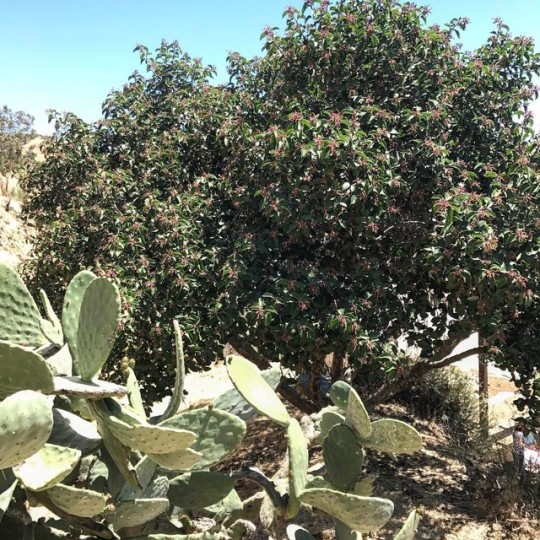
A beautiful, rounded laurel sumac (malosma laurina) at Theodore Payne yesterday. #tpf #laurelsumac #canativeplants #malosmalaurina #theodorepaynefoundation #theodorepayne (at Theodore Payne Foundation for Wild Flowers and Native Plants)
1 note
·
View note
Text
Staghorn Sumac: The Wild Lemonade Berry
By Sam Thayer – Sumac is a common, well-known and easily recognized feature of the rural North American landscape. Staghorn sumac trees with thick twigs and an almost tropical appearance are familiar to most country dwellers. Their shape and large cone-like, dark red berry clusters are distinctive and their bright red autumn foliage is hard to forget. Yet few people know that these little trees have provided a delicious and refreshing summer drink throughout much of the world for thousands of years. Sumac forms large patches called clones; what looks like many trees or shrubs is actually a single plant, like a patch of growing rhubarb or growing asparagus. Large clones are tallest in the center, getting gradually shorter towards the outside, creating the illusion of a gentle hill where there is none. In such a sumac clone the trees often have the habit of bearing leaves only at the canopy, so that when one ventures underneath he is struck with the impression of being under a gentle dome painstakingly coaxed into existence by some master gardener. There were large colonies of sumac growing in an abandoned field at the edge of the town where I grew up. I spent many hours as a child in the calming shade of sumac domes, following rabbit runs in the short grass below or just listening to the birds, daydreaming and staring skyward. The Staghorn sumac was one of my favorite tree before I even learned to make sumac lemonade.
Staghorn sumac is found throughout the northeastern U.S. and southeastern Canada.
Staghorn sumac or Rhus typhina grows throughout the northeastern U.S. and southeastern Canada. Staghorn sumac is a small tree or large shrub, usually eight to 20 feet tall although I’ve seen a few as tall as 35 feet. The twigs are sparse and very thick, and the first-year growth is covered with velvety hairs (like a stag’s horns in velvet). The leaves are large — sometimes more than two feet long — and compound, with each leaflet lanceolate and serrated. The foliage of the Staghorn sumac closely resembles that of ailanthus (tree of heaven or stinktree) and black walnut. Staghorn sumac bark is smooth, thin, dark gray, and the inner bark, which is slightly sweet to chew on, is light green. The staghorn sumac plants produce a milky latex that will stain your clothes dark brown. This and other species of true sumac usually grow in pure stands that propagate themselves by rhizomes. They are common on rural roadsides, along railroad tracks and fence rows, and in old fields and other open habitats. Here’s a soil fact about sumacs: They require well-drained soil, and can thrive on dry sites. They are extremely intolerant of shade and are rarely found in any type of mature forest. There are numerous other species of sumac in North America, and at least one is found in almost every inhabited part of the continent. Prairie sumac Rhus lanceolata occurs in Texas and parts of Oklahoma and New Mexico; Mearn’s sumac R. choriophylla grows in southern Arizona and New Mexico; lemonade berry R. integrifolia grows in southern California; shining sumac R. copallina is found over the southern half of eastern North America, smooth sumac R. glabra is found throughout the eastern U. S. and scattered in the Rocky Mountains and Great Plains; fragrant sumac R. aromatica and the very similar basket bush R. trilobata are found in mountainous or rocky situations from coast to coast, south into Mexico and north into Canada. This is only a partial list, so wherever you are, you are probably near some useful species of sumac. Consult a field guide for your region. (Laurel sumac Malosma laurina, found in the West, is not a true sumac and is reportedly not edible.)
Ready to Start Your Own Backyard Flock?
Get tips and tricks for starting your new flock from our chicken experts. Download your FREE guide today! YES! I want this Free Guide »
A Sumac bush in autumn. Raindrops add to the glistening color.
When I mention making a beverage from sumac, many people who have heard of poison sumac think I am crazy. Quite a few people assume that all sumacs are “poison sumac.” Poison sumac, however, is distinctly different from the true sumacs and is, fortunately, less common. Anybody who tries to differentiate the two will have an easy time of it. All of the true (edible) sumacs have dark reddish or purple fruit borne in erect, tight clusters. (On some of the western species, the clusters are pretty small and may not be as tight as on the eastern species, but they are still distinctly red.) The surface of the fruit is fuzzy or grainy. The poison sumac Toxicodendron vernix is classified in a different genus (along with poison ivy and poison oak). This shrub, which causes reactions even more readily and severely than its better-known brethren, is confined to the east. It can be differentiated from true sumacs most readily by the fact that the berries are whitish, waxy, hairless, and hang in loose, grape-like clusters. They are quite unlike the berries of the edible sumacs, like staghorn sumac. The leaf edges of poison sumac are smooth, while those of the edible eastern sumacs are toothed. Poison sumac also differs in that it rarely grows in dense, pure stands, and in that it inhabits swamps rather than dry areas.
Sumac “Lemonade”
As previously mentioned, the red-berried true sumacs have been widely used to brew a tart and refreshing drink. This drink is delicious, easy to prepare, fun to gather, nutritious, unique and free. Its source is easily accessible to millions of Americans every summer.
This beverage has been called sumac-ade, rhus-ade, sumac lemonade, Indian lemonade, sumac tea and probably some other names that I have yet to hear. Whatever people call it, they pronounce it delicious. When made properly it is as universally liked as lemonade. I have personally brewed this beverage from staghorn, smooth, and shining sumacs on many occasions. Keep in mind that my experiences refer to these species in the Midwest, and other kinds might need to be treated a little differently.
Sumac “berries” are seeds covered with hairs and a thin coating of flavoring substance.
Preparation of the beverage is simple. The first step is to harvest the berries. Sumac “berries” are really just seeds covered with a thin coating of flavoring substance and hairs. The large clusters are so easy to collect that in just a few moments you can have enough for a pitcher of wild Kool-Aid that kids will love. I usually just snap off the twig that bears the cluster by bending it quickly, although some people use pruning shears or a knife. You want to get the berries when they are dark red and fully mature, so that they have fully developed their tart flavor, but before the rain has had the opportunity to wash the flavor out. In most of North America, the first clusters are ready to be plucked sometime in July, with the prime time being in early August. Taste each cluster as you harvest to assure yourself that you are collecting something with flavor since occasionally they are bland. A dark purple coloration usually indicates that the flavor of the fruit has developed fully, yet some of the best clusters I’ve tasted were light pink. Sometimes a white, sticky substance coats the berry heads; this is pure essence of sumac flavor-don’t let it scare you off. I pluck about six to eight average-sized clusters for a pitcher of sumac-ade.
I take my half-dozen berry clusters, cram them into a pitcher, pour cold water over them, crush them up a little with my hand, and then let the pitcher sit in a cool place for a while. Pouring boiling or hot water over the berries makes for poor flavor, for it leaches tannin from the stems, causing the drink to become bitter. The longer the berries infuse, the stronger the drink will be. When the flavor is to your liking, just strain the drink through a cheesecloth to remove seeds and hairs. Sumac-ade is pleasantly tart with a light pink color. Some people add sugar, but I prefer it without. A potential mistake is to harvest the berry heads before they are ripe, in which case they will produce an unpleasantly bitter brew. More commonly, the problem is that the berries are collected long after their flavor has been washed out by rain. Although I have found good-tasting berries into April, this is the exception; around here the vast majority of them are spent by the end of August. You can expect to find good ones if you taste around, until early October and sometimes later and there are always those with just a hint of flavor. To enjoy this refreshing summer beverage in the middle of winter, it pays to harvest the heads in prime time and dry them, so you don’t have to worry about using mediocre material.
The tartness of sumac is partly due to ascorbic acid (vitamin C) so one also has a health incentive to drink this beverage. There are other things that can be done with sumac-ade. My sister made one of the best wines that I have ever tasted from it. I once prepared a potent sumac concentrate by soaking four batches of berry heads in the same water, one after the other, for one-half hour each. This concentrate made a wonderful and very tart jelly. The flavor is transformed and weakened somewhat by the boiling, so be sure to use a very strong sumac brew for the jelly. Euell Gibbons recommended using sumac-ade instead of plain water to boil elderberry and other fruits that need a touch of tartness to liven them up for using in jam or jelly. Also, the young, thick, tender tips of sumac shoots (especially staghorn) in early summer can be peeled and eaten raw or cooked. They are sweet and delicious, much like raspberry stalks. Since sumac is related to cashews and mangoes, anyone allergic to those foods should avoid it, or proceed with extreme caution. All in all, however, the sumac is a wonderful tree, deserving of much more attention from those who love the outdoors. Unfortunately, the fact that it shares names with a tree of ill-repute has caused many to shun it. That does leave more for us, but either way, there’s plenty of sumac to go around. Why not try some this summer?
Originally published in Countryside July / August 2003 and regularly vetted for accuracy.
Staghorn Sumac: The Wild Lemonade Berry was originally posted by All About Chickens
0 notes
Text
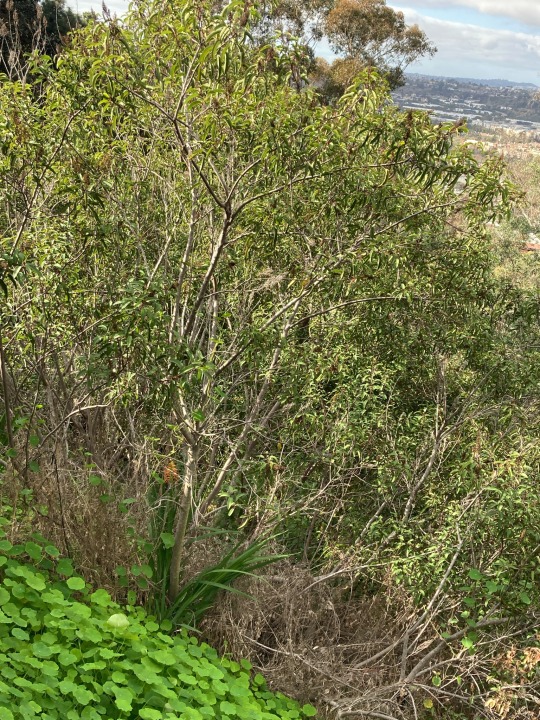

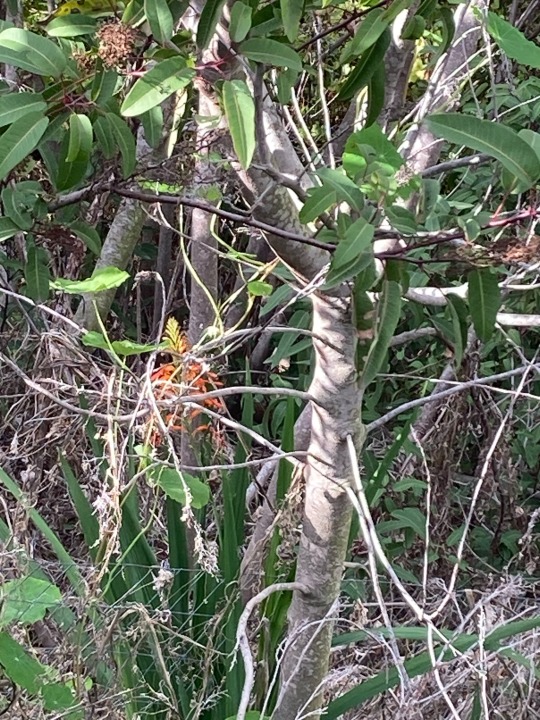
#cobra lily#african flag#chasmanthe#iridaceae#laurel sumac#malosma laurina#nasturtiums#canyon#san diego
0 notes
Text

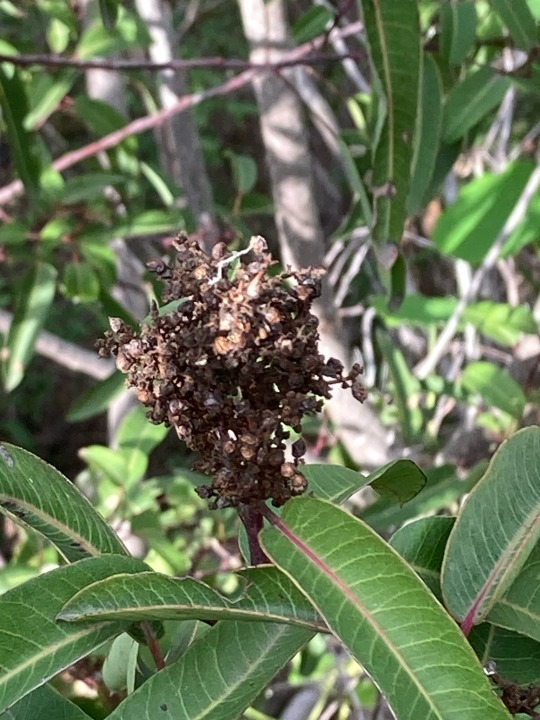

0 notes
Text
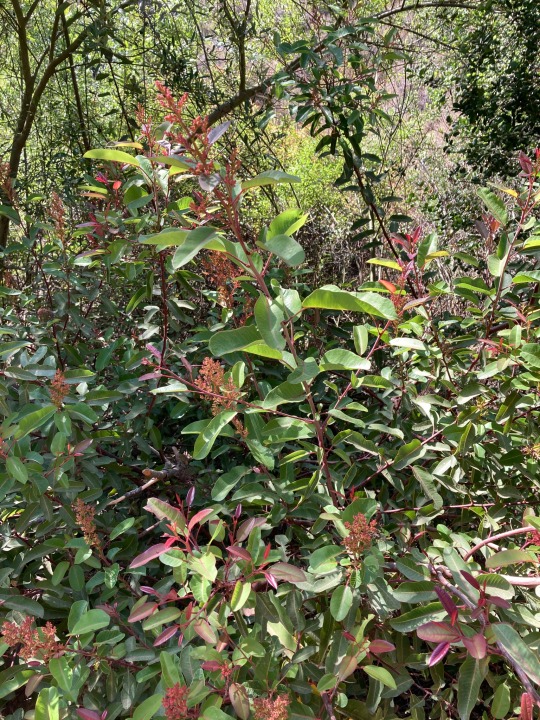

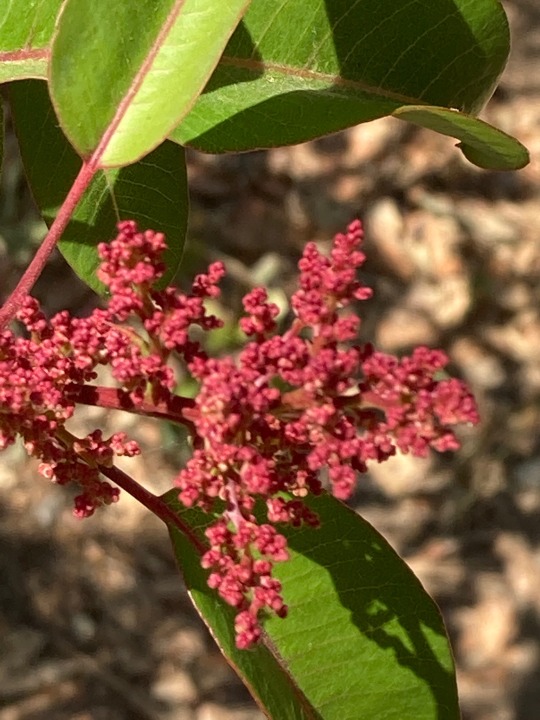
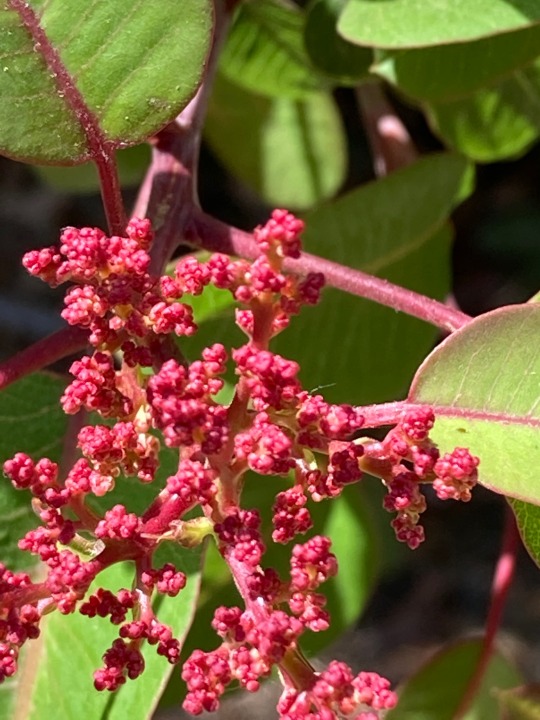
#laurel sumac#malosma laurina#california native plants#flowering trees#berries#drupes#los angeles#franklin canyon
3 notes
·
View notes
Text

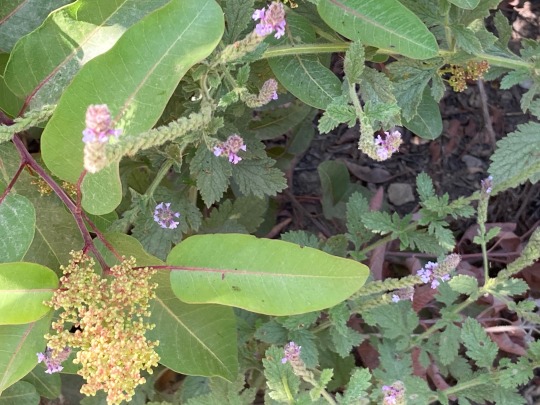


#western vervain#verbena lasiostachys#wildflowers#laurel sumac#malosma laurina#california native plants#microflora#berries#drupes#franklin canyon#los angeles
2 notes
·
View notes
Text
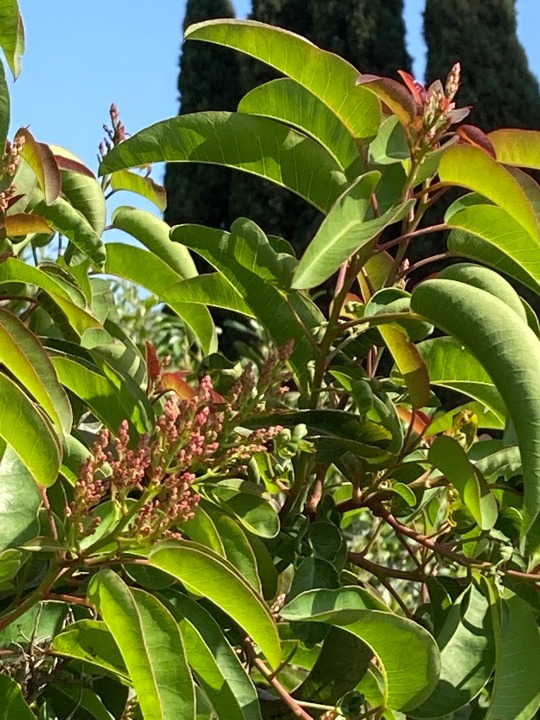
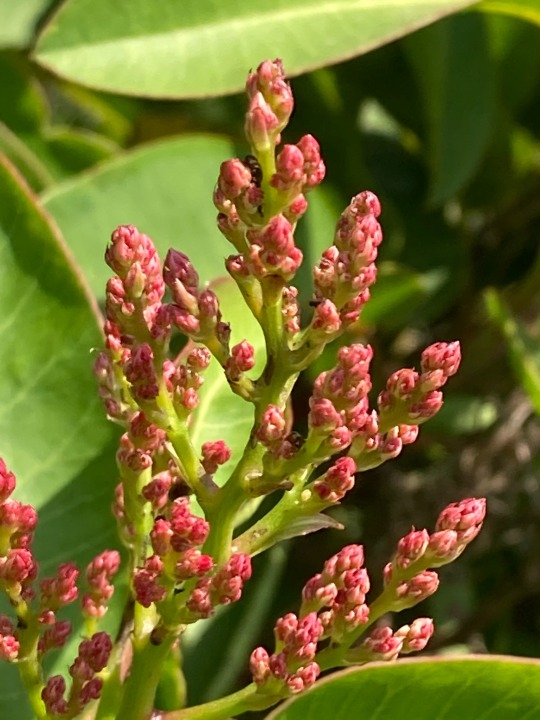
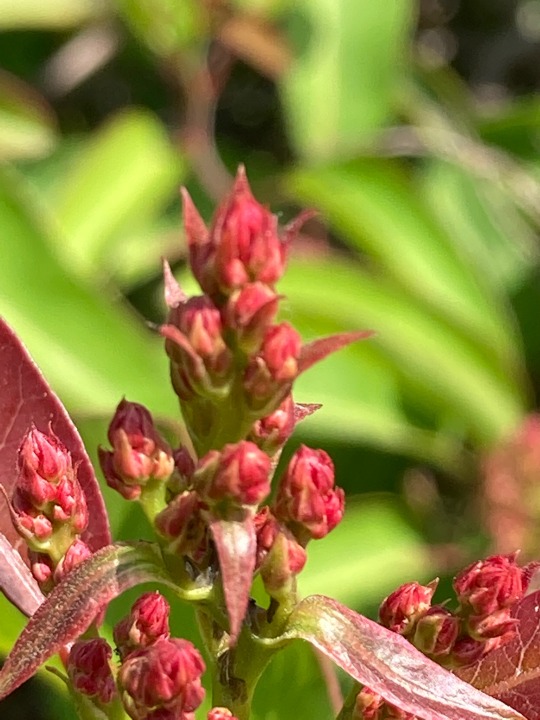

#laurel sumac#sumac#malosma laurina#flowering trees#flower buds#red leaves#california native plants#colorado lagoon#long beach
1 note
·
View note
Photo


1 note
·
View note
Text
DAY 1: Malosma laurina
Date: 8/28/2019
Time: 9:30 AM
Location: Lower Arroyo Park, west of the parking lot about 250 ft.
Route: Facing north, at about the southern end of the parking lot, head west through the small walking path. The tree will be to your left (see red X) on map

Weather: About 72F - by this time, the day had gotten hotter. The sky was no longer overcast. However, because of the forest habitat, under story was significantly cooler.
MALOSMA LAURINA - LAUREL SUMAC



Leaves are long and oval, almost a silvery green with yellow veins (though I did see some red veins on the plants). Branches appeared mostly reddish with some lighter brown/green at some parts. The leaves of the laurel sumac curl upwards and in (unlike the leaves of coast live oak, which grow downwards and in).
Something else I observed was that at the end of the branches, there were little berries growing in a cone-like shape. Most of the berries were green and some were more dark brown/black. There were little cream colored flowers with a burgundy center that came from these berries. There was a variety of blooming stages on these berries. Some were just coming up, some were flowering, some of the berries were wilted, and some of the berry-bearing branches were completely dried out with no berries present.
Some fun facts I learned about Malosma laurina:
When the little cream flowers are in bloom, they smell like green apples
Malosma laurina is extremely sensitive to the cold and is not freeze tolerant. It’s considered a “sentinel plant” that indicates to citrus and avocado farmers areas that are free of frost and suitable for growing.
After a fire, it is one of the first plants to resprout.
0 notes
Photo
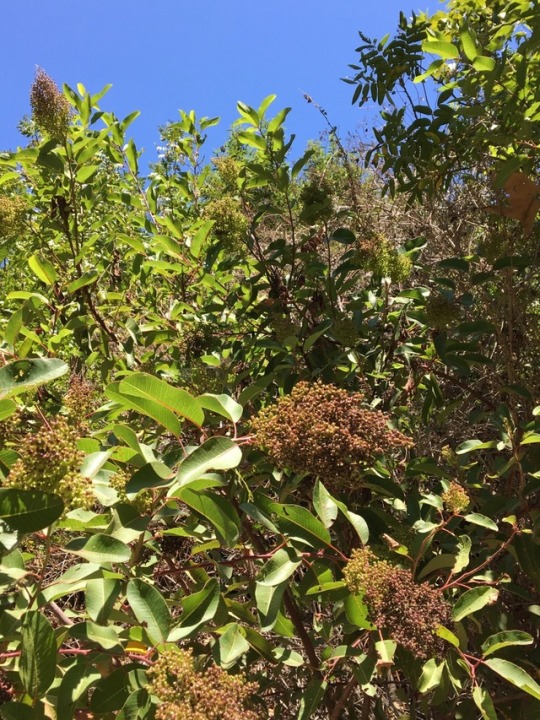


2 notes
·
View notes

